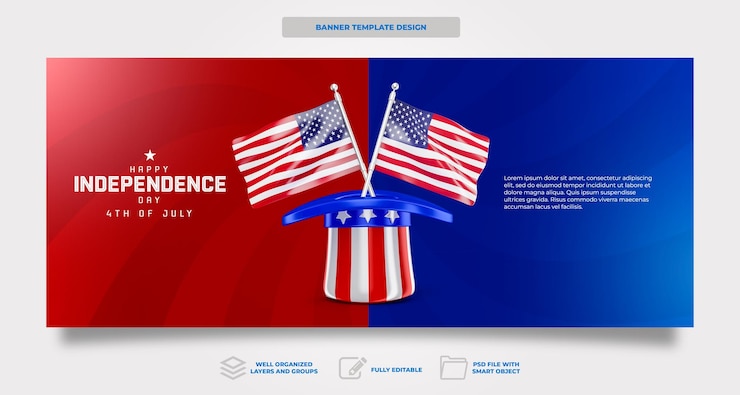Gun Control Debate: Biden vs Trump
Gun Control Debate: Biden vs Trump in a nation where the echo of gunfire can resonate through neighborhoods just as the reverberations of political rhetoric can reverberate through halls of power, few issues ignite as much fervor as the question of firearm regulation. This discourse juxtaposes two titanic figures—President Joe Biden and former President Donald Trump—in their diametrically opposed visions for America’s relationship with guns. Unpacking the contours of the “Biden Trump gun control” debate requires us to traverse history, dissect policies, and decipher the cultural zeitgeist shaping public sentiment.

A Prelude: America’s Firearm Heritage
From colonial militias to modern-day hunting traditions, firearms have been woven into the American tapestry for centuries. The Founders enshrined the Second Amendment in 1791, affirming “the right of the people to keep and bear Arms.” Yet this constitutional guarantee has proven protean, accommodating everything from frontier self-defense to the high-powered semiautomatics of today. The perennial tension lies between individual liberties and collective safety.
- Short sentence.
- Long sentence: At its core, the debate hinges on whether robust regulations infringe upon a sacrosanct freedom or whether, conversely, they are indispensable bulwarks against spiraling violence.
This historical backdrop provides the crucible in which the “Biden Trump gun control” dynamic is forged.
The Current Landscape of Gun Violence
Before delving into policy particulars, it’s vital to confront the data. In 2023, the United States saw over 45,000 firearm-related fatalities—an incendiary figure emblematic of a public-health crisis as well as a criminal-justice challenge. Urban centers, suburban enclaves, and rural backroads alike have experienced mass shootings, suicides via gun, and unintentional discharges. This sobering panorama has galvanized activists, legislators, and voters to demand solutions.
Biden’s Regulatory Rembrandt
Embracing Incrementalism and Comprehensive Reform
President Joe Biden approaches gun control through a multifaceted prism. He underscores the necessity of universal background checks, closing loopholes in private and gun-show sales. His administration advocates an assault weapons ban, seeking to prohibit high-capacity magazines and semiautomatic rifles modeled on military designs. Additionally, Biden supports red flag laws—jurisprudential mechanisms empowering courts to temporarily remove firearms from individuals deemed a threat to themselves or others.
- Short sentence.
- Complex sentence: This trifecta of policies—background checks, weapon bans, and temporary removal orders—forms a tapestry of preventative measures aimed at disrupting the deadly nexus between impulse and implement.
Legislative Milestones
In 2022, Congress enacted a bipartisan measure that strengthened background-check protocols and incentivized states to adopt red flag statutes. Biden lauded this as the most significant advancement in two decades. Yet the administration’s ambitions extend beyond these modest successes. Through executive orders, the president has directed federal agencies to:
- Track ghost guns: Firearms assembled from kits that lack serial numbers.
- Regulate stabilizing braces: Devices that can convert pistols into effectively short-barreled rifles.
- Increase funding: Allocate grants to community violence intervention programs.
Short sentence.
These executive efforts are designed to complement, rather than supplant, legislative action.
Rhetoric and Moral Imperative
Beyond policy apparatus, Biden has adopted a moralizing tone. He often references the 2012 Newtown shooting and the Oklahoma City bombing, invoking the faces of children and first responders. He argues that inaction in the wake of repeated tragedies is unconscionable. In his speeches, he frames gun control as a public-health imperative, calling for empathy and collective responsibility.
Trump’s Constitutional Clarion
The Second Amendment as Sanctuary
Donald Trump’s stance on guns is anchored in a near-evangelical defense of the Second Amendment. He contends that any infringement on gun rights jeopardizes fundamental liberties. Trump emphasizes national reciprocity for concealed-carry permits, enabling permit holders to carry across state lines. He opposes new bans on assault weapons and high-capacity magazines, arguing that law-abiding citizens should not be penalized for the actions of criminals.
- Short sentence.
- Elaborate sentence: Through this prism, guns are not weapons of violence but emblems of autonomy and personal sovereignty, essential for self-defense and deterrence of tyranny.
Deregulatory Decrees
During his presidency, Trump rolled back certain Obama-era firearm regulations and vetoed attempts to expand background checks. He supported the protection of gun manufacturers from civil liability, asserting that legal exposure forced companies out of business and deprived consumers of access to modern firearms.
Short sentence.
Additionally, his administration:
- Approved the sale of short-barreled rifles with minimal scrutiny.
- Reversed restrictions on the importation of military-style weapons.
- Pushed for increased funding for school security rather than broad-based gun bans.
These actions illustrate a deregulatory paradigm deeply skeptical of federal oversight.
Political Theater and Cultural Resonance
Trump’s rhetorical flourishes often included promises to “preserve our way of life” and to protect “law-abiding citizens” from bureaucratic overreach. He courted the National Rifle Association (NRA) and leveraged campaign events to highlight armed supporters, reinforcing the narrative of guns as a protective bulwark. His language is characterized by brevity and bombast—short, staccato sentences that resonate with core supporters.
Divergent Philosophies: Prevention vs Protection
At the heart of the “Biden Trump gun control” debate is a philosophical schism. Biden predicates his approach on prevention—installing safety rails to prevent misuse before it occurs. Trump, by contrast, stresses protection—ensuring that individuals retain the means to defend themselves against threats. While Biden speaks of “closing loopholes” and “saving lives,” Trump warns of “slippery slopes” and “government overreach.”
- Short sentence.
- Long sentence: This dialectic mirrors broader ideological divides, whether in healthcare, immigration, or environmental policy—between regulatory foresight and libertarian autonomy.
Navigating Constitutional Contours
Judicial Hurdles
Both approaches must contend with the Supreme Court’s evolving Second Amendment jurisprudence. In District of Columbia v. Heller (2008), the Court affirmed an individual right to bear arms, while New York State Rifle & Pistol Association v. Bruen (2022) introduced a historical-test framework for evaluating new regulations. Any substantial expansion of gun control—such as a nationwide ban on semiautomatic rifles—faces the prospect of judicial invalidation if not tethered to historical analogues.
Short sentence.
Consequently, legislative architects under Biden must craft statutes with careful nods to centuries-old traditions of regulated militia service. Trump’s deregulatory preferences, meanwhile, find resonance in these judiciously expansive Second Amendment readings.
Public Opinion and Electoral Implications
The Polling Landscape
Surveys consistently show that a majority of Americans support universal background checks—often upwards of 80%. However, support for an assault weapons ban hovers closer to 50-55%, with stark partisan divides. Democrats overwhelmingly endorse stricter regulations; Republicans are more ambivalent or opposed.
- Short sentence.
- Complex sentence: Among independents, the terrain is rugged: some recoil at the prospect of new gun laws, while others demand government action after high-profile mass shootings.
Swing Voters and Suburban Dynamics
Suburban voters—particularly suburban women—have emerged as a pivotal bloc. Many cite school safety and domestic violence concerns as motivation to back moderate gun measures. These voters could be swayed by rhetoric that balances constitutional respect with sensible safeguards. In the “Biden Trump gun control” clash, winning suburban hearts may tip the scales in competitive districts and states.
The Role of Gun Lobby and Advocacy Groups
National Rifle Association (NRA)
The NRA remains a formidable force, tirelessly lobbying against most new restrictions. It endorses pro-Second Amendment candidates, funds extensive advertising campaigns, and mobilizes grassroots activism. Under Trump’s patronage, the NRA found a sympathetic White House ally. Biden, conversely, casts the NRA as an impediment to common-sense reform.
- Short sentence.
- Long sentence: The friction between the administration and the NRA encapsulates the broader standoff between regulatory zeal and gun-rights absolutism.
Everytown for Gun Safety and Other Reformers
On the pro-regulation side, organizations like Everytown, the Brady Campaign, and Giffords Law Center champion stricter laws. They emphasize data-driven advocacy, highlighting the correlation between stringent regulations and lower homicide rates. Their strategies include legal challenges, public awareness campaigns, and collaboration with local governments.
Short sentence.
These advocacy blocs buttress Biden’s agenda and amplify grassroots momentum for reform.
Policy Proposals: A Comparative Catalogue
| Policy | Biden’s Position | Trump’s Position |
|---|---|---|
| Universal Background Checks | Mandatory for all sales and transfers | Opposed to federal expansion; states’ rights preferred |
| Assault Weapons Ban | Supports reinstating a ban with modernized definitions | Opposes; labels it ineffective and punitive |
| High-Capacity Magazine Limits | Favors 10-round capacity cap | Opposes; sees magazines as essential for self-defense |
| Red Flag Laws | Incentivizes state adoption; federal funding support | Generally skeptical; concerns about due-process violations |
| National Reciprocity | Neutral or cautious; focus on background checks first | Strongly supports; federal override of state permit laws |
| Ghost Gun Regulation | Regulate kits; require serialization | Opposes; frames as small-batch crafting, not a major threat |
| School Safety Funding | Invest in mental health and infrastructure | Funding security measures rather than restricting firearms |
This tableau illustrates the chasm between the two camps. Each measure is steeped in normative values—public safety versus personal liberty.
Case Studies: Violence Interrupted
Connecticut’s Assault Weapons Ban
In 1993, Connecticut enacted one of the nation’s first assault-weapons bans. Studies indicate a significant drop in mass-shooting fatalities during the ban’s tenure. Proponents cite this as evidence that targeted restrictions save lives.
- Short sentence.
- Analytical sentence: For Biden’s team, Connecticut’s model offers a blueprint—an empirical testament to legislative efficacy.
Missouri’s Constitutional Carry
Missouri allows permitless carry of handguns. Its legislature repealed most background-check requirements for private sales. Advocates argue this empowers responsible citizens; critics point to an uptick in accidental shootings and diminished law-enforcement oversight.
Short sentence.
For Trump, Missouri exemplifies unshackled freedom; for Biden, it exemplifies regulatory abdication.
The Cultural Undercurrents
Beyond legislation, American gun culture pulsates with symbolism. Firearms evoke self-reliance, frontier romance, and, for some, defiance against perceived overreach. Conversely, survivors of shootings and bereaved families view guns as instruments of trauma necessitating stricter control.
- Short sentence.
- Expansive sentence: This dialectic of meaning underscores why the “Biden Trump gun control” debate is as much about collective identity as it is about legal minutiae.
Media, Misinformation, and the Digital Sphere
Social media platforms have become battlegrounds where sensationalized clips and disinformation campaigns circulate rapidly. Both sides exploit viral narratives: tragedies are repurposed to buttress arguments for stricter laws or to warn of governmental tyranny. The rapid celerity of these exchanges amplifies polarization and complicates efforts to find common ground.
Short sentence.
Combatting misinformation thus emerges as its own policy imperative.
Toward a Truce? Prospects for Bipartisanship
Despite entrenched partisanship, there have been glimmers of collaboration. Bipartisan background-check legislation passed in 2022 demonstrated that common ground exists. Polling shows widespread agreement on measures like safe-storage requirements and enhanced mental-health funding. Should legislative architects craft narrowly tailored bills with due respect for constitutional contours, there remains a path—albeit narrow—for compromise.
- Short sentence.
- Elucidating sentence: A judicious synthesis of both camps’ concerns—preserving individual rights while instituting robust safety mechanisms—could transform incendiary debate into constructive reform.
The “Biden Trump gun control” debate is far more than electoral theater. It is a crucible in which America’s values, fears, and aspirations are tested. Whether one views guns as guarantors of liberty or as vectors of violence—or some amalgam of both—the imperative remains clear: forging policies that reconcile constitutional heritage with the exigencies of contemporary society.
- Short sentence.
- Reflective sentence: As the nation marches forward, the challenge lies not only in the statutes enacted but in the cultural dialogue sustained—one that acknowledges complexity, elevates empathy, and strives for pragmatic solutions in the face of intractable tragedy.
At stake is not merely political advantage, but the prospect of saving lives, protecting freedoms, and fulfilling the promise of a more secure, harmonious union. In this ongoing saga, the legacies of Biden and Trump will be measured not only by their edicts but by the tangible impact on communities across the American landscape.






